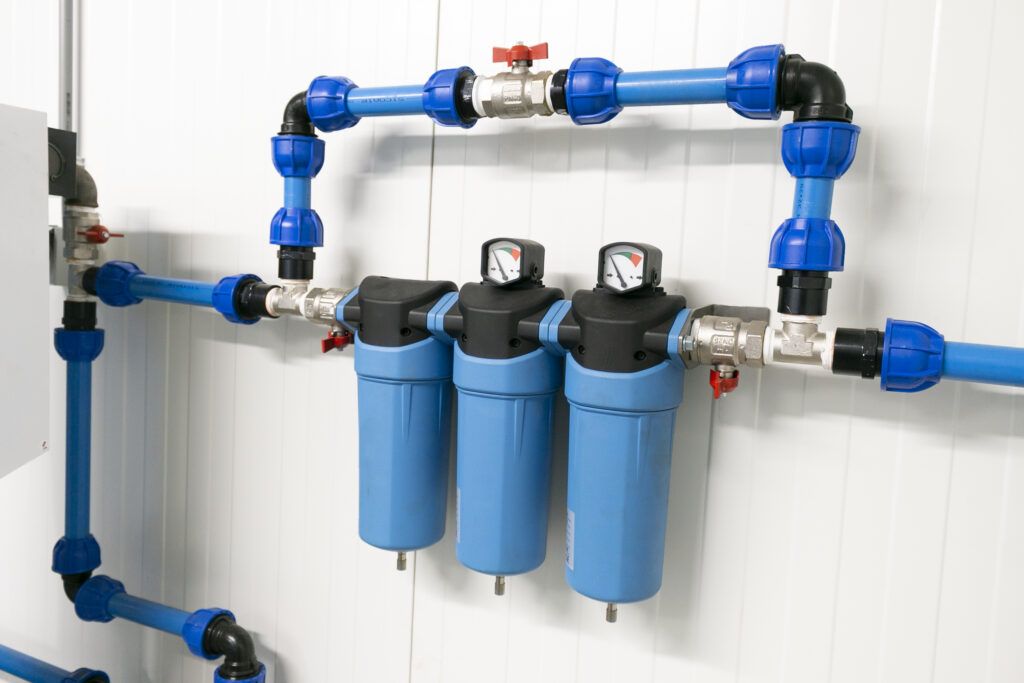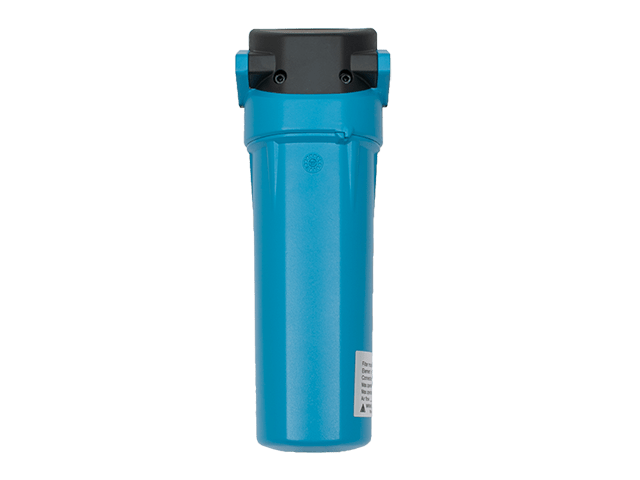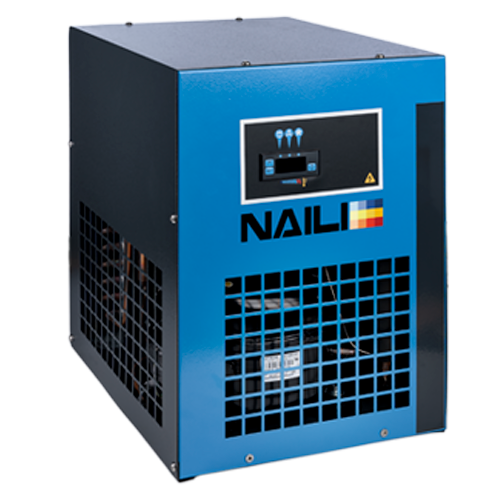Filtration
The air we breathe is far from ideal for producing compressed air
Powerful filtration for optimum compressed air quality
Compressed air is an energy carrier, i.e. a pressurized gas for transporting energy from one place to another. Electrical energy is put into a compressor, which compresses the air to a higher pressure. The pressure is moved to another place through a pipe to be released there via a tool or a cylinder, which thereby converts the stored energy into work.
The air we breathe is far from ideal for producing compressed air. This air is full of pollutants: one cubic meter can easily contain 100 million dust particles. This includes airborne particles such as soot, pollen, dust, water vapor, etc. The presence of these contaminants varies from place to place and is also strongly dependent on the weather. Also don't forget that the compressor puts oil into the air during compression. It is therefore necessary that you filter the air for a correct compressed air quality.

Naili filtration products
Compressed air filters
Prefilters Fine filters Ultrafine filters Activated carbon filters
(Compressed) air pollution
The air we breathe is far from ideal for producing compressed air. It's a pretty constant mixture of 16 different gases. Nitrogen and oxygen are the main gases, but it also contains hydrogen, carbon dioxide, carbon monoxide and a small proportion of noble gases.
The air is full of pollutants: one cubic meter can easily contain 100 million dust particles. This includes airborne particles such as soot, pollen, dust, water vapor, etc. The presence of these contaminants varies from place to place and is also strongly dependent on the weather. Also don't forget that the compressor puts oil into the air during compression. It is therefore necessary that you filter the air for a correct compressed air quality.
| Share of volume in % | ||
|---|---|---|
| N2 | Nitrogen | 78.08 |
| 2 | Oxygen | 20.95 |
| Ar | Argon | 0.93 |
| C02 | Carbon dioxide | 0.03 |
| Ne | Neon | 0.0018 |
| He | Helium | 0.0005 |
| Kr | Krypton | 0.00011 |
| SO2 | Sulphur dioxide | 0.00001 |
| CH4 | Methane | 0.000002 |
| H2 | Hydrogen | 0.000005 |
| 3 | Ozone | 0.000007 |
| Xe | Xenon | 0.0000009 |
| N02 | Nitrogen dioxide | 0.0000002 |
| l2 | Iodine | 0.0000001 |
Filtering compressed air
ISO 8573-1:2010 defines the air quality in 7 classes. Air quality is described objectively here. You can use this to specify your compressed air quality. A demolition hammer may work with a lower quality of compressed air, but the air that is blown into your food production process needs to have a much higher quality. The higher the quality of compressed air you need, the more you have to do to get the compressed air to that quality level.
| Class | Solid particles | max. number of particles per m³ | Water | Oil | ||
|---|---|---|---|---|---|
| 0,1-0,5 micron | 0,5-1,0 micron | 1,0-5,0 micron | Pressure dew point °C | (incl. vapour)/m³ | |
| 0 | To be specified by customer or supplier | ||||
| 1 | ≤ 20,000 | ≤ 400 | ≤ 10 | ≤ -70 | 0.01 |
| 2 | ≤ 400,000 | ≤ 6000 | ≤ 100 | ≤ -40 | 0.1 |
| 3 | Not specified | ≤ 90000 | ≤ 1000 | ≤ -20 | 1 |
| 4 | Not specified | Not specified | ≤ 10000 | ≤ 3 | 5 |
| 5 | Not specified | Not specified | ≤ 100000 | ≤ 7 | Not specified |
| 6 | Not specified | Not specified | Not specified | ≤ 10 | Not specified |
Humidity
When compressing the air, you also compress the contaminants and the moisture. Moisture accelerates the wear process of your tools and machines by washing away the lubrication. Moreover, moisture promotes corrosion and moisture leads to frost damage or mechanical damage due to water hammer. In addition, moisture causes clogging by allowing fine dust to clump together. Finally, moist air gives more resistance during transport, which makes it less efficient and more expensive.
All in all, it is important for you to have as little moisture in your compressed air system as possible. Cyclone filters help you remove the initial moisture from your compressed air.
Also indispensable in your compressed air conditioning: refrigerated dryers
CL-serie koeldrogers
De koeldrogers uit de CL-Serie zijn uitermate geschikt om uw gecomprimeerde lucht gedroogd aan te leveren aan uw gebruikers. Deze drogers zorgen er met een dauwpunt van ca. 4 °C voor dat er in uw leidingsysteem geen condens zal vormen zolang de omgevingstemperatuur niet onder 4 °C komt.


